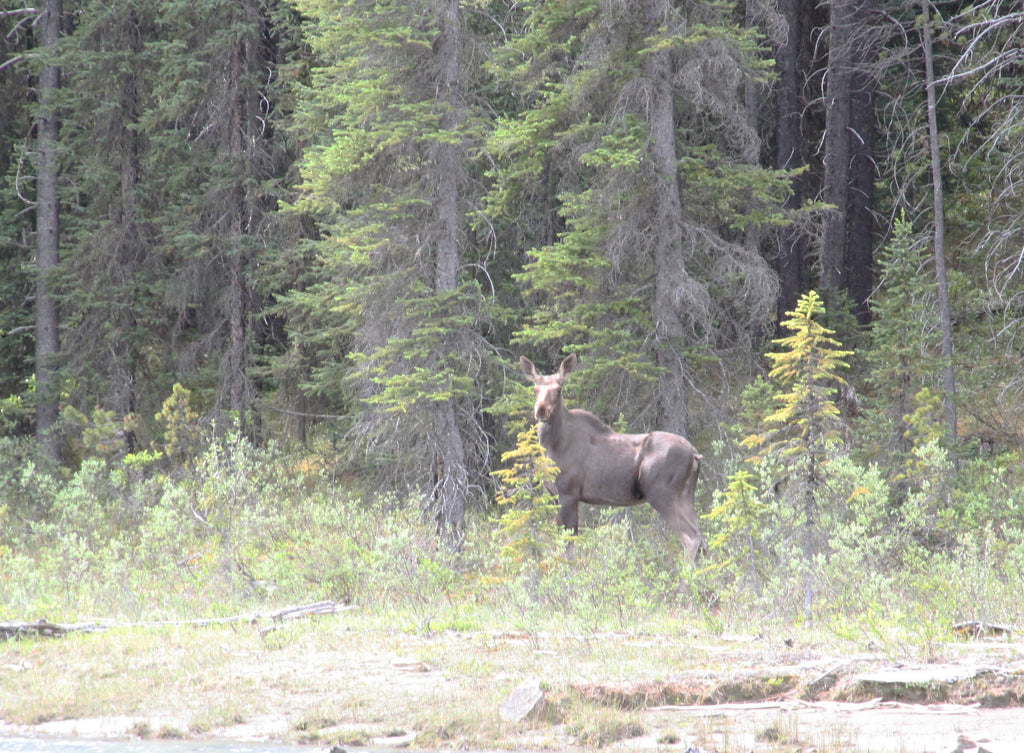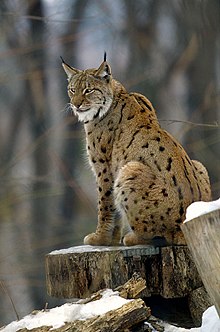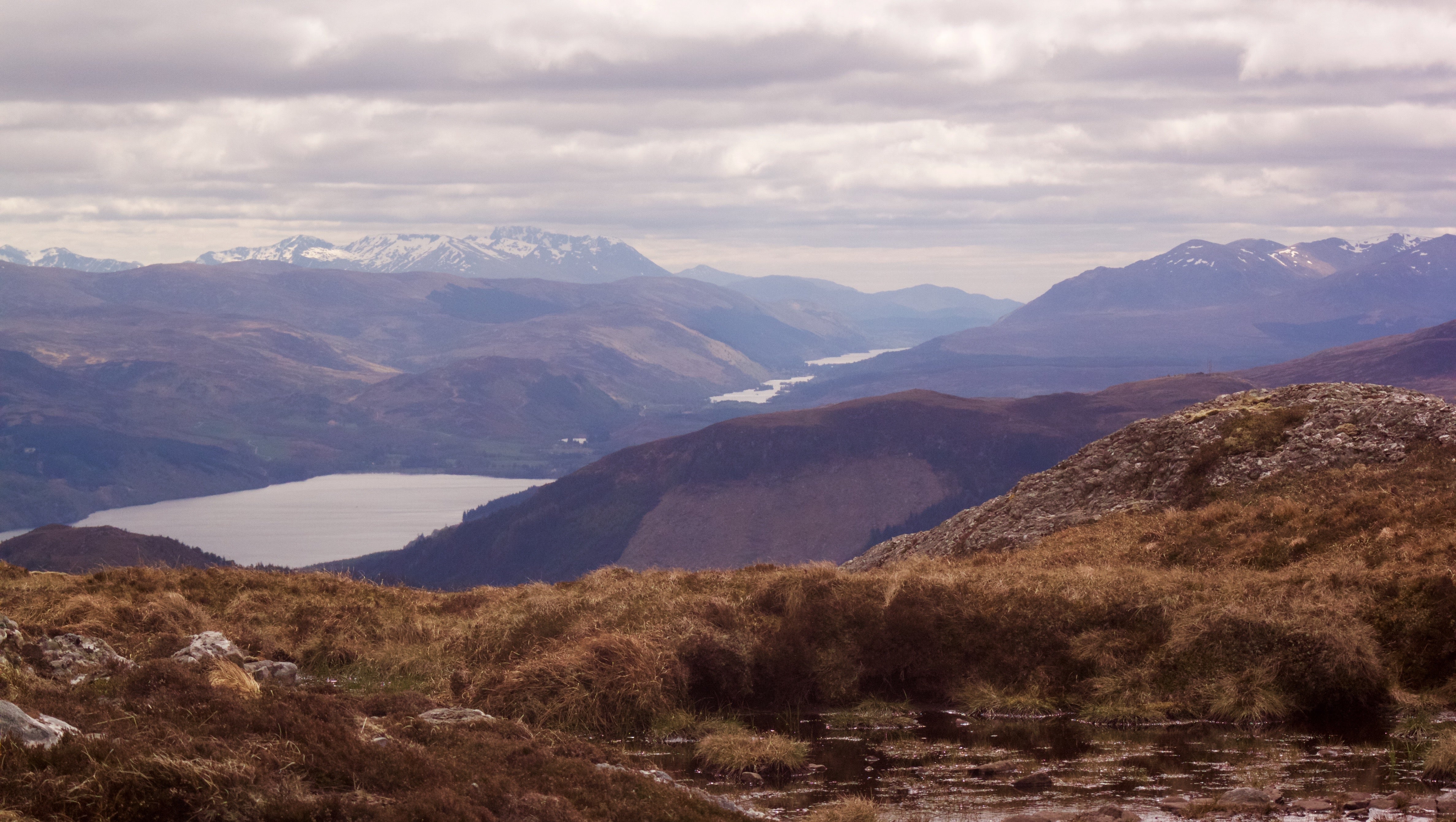Have you visited The Highlands of Scotland? Do you know about the dynamic history of its landscapes?
The ecology, climate and human populations of The Highlands have all influenced the unmistakable scenery found there today.
Here I share a brief history of The Highlands, focusing on the ecological condition, and provide an insight into its potential exciting future.
A Remote Landscape
The feeling of remoteness isn’t hard to find in the Scottish Highlands. At 9.1 people per square km, the Highlands have one of the lowest human population densities in Europe, roughly half that of Sweden or New Zealand, and similar to Chad.

This hasn’t always been so; a result of the infamous clearances and later outward migration during the industrial revolution.
In 2015 1.7 million people visited the Highlands, no doubt many wanting to experience the closest thing to wilderness on offer in the UK, but what kind of wilderness is on offer?
The seemingly endless, open moorland can certainly provide a feeling of isolation and freedom from other parts of our crowded island, with often uninterrupted views over entire valleys. The area proudly boasts some of the world’s best salmon fishing, cleanest air and darkest skies.
But the purple moor-grass and heather-clad glens didn’t always look this way.
Forests in The Highlands
Following the retreat of the last glacial peak 12,000 years ago, a diverse forest spread back into the Highlands, reaching its peak around 5,000 years ago. Later there was a decline in forest cover in the north and west due to a cold, wet climatic period.
Then around 4,000 years ago, people began to make significant impacts on the remaining forest through cutting wood for construction and burning the forest to create land for agriculture. Today only 2% of the former ‘great forest of Caledon’ remains.
With a more favourable contemporary climate, Scots pine should be found growing to around 640m or higher in Scotland, with a diverse montane scrub of willows, birch and juniper above this height, grading into the barren plateau landscapes above 1000m.
In many parts of the northern and western Highlands it is the enormous population of deer that prevents such forest from returning. Due to mild winters, lack of culling effort and the absence of significant predation the deer population in Scotland has more than doubled since 1965.
Browsing pressure is such that almost all accessible vegetation is overgrazed, natural tree regeneration is suppressed, and as deer are not removed from the hills or forest in the winter there is no period of the year when the vegetation is able to recover.
Wild Forests and Wild Animals
In the last year, as well as the Scottish Highlands, I have been lucky to visit both western Canada and Norway. These regions have a similar climate, geology and human population density to the Highlands, but there the landscape is cloaked in a diverse forest of spruce, fir, pine, poplar, birch and willow amongst others.

In these forests you can find an associated diverse range of wildlife, including many animals which often define boreal forest wilderness such as moose, brown bear, lynx, and grey wolf.
All of these species are native to the Highlands and were hunted to extinction, with the last wolf probably killed in Sutherland in the 17th century.
How are The Highlands Changing?

Awareness is growing about how landscape and ecological restoration could re-invigorate both the ecology and the human population of the Highlands. The charity Trees for Life, recognising this potential, are busy planting thousands of native trees, centred on Glen Affric.
A visit to the remnant native forests of Glen Affric is a magical experience. Huge Scots pines covered in beard lichen and mosses. Crested tits calling from the dew-laden canopies. The smell of heather and juniper, and the springy, peaty soil under foot.

The Highlands are already blessed with the densest population of golden eagles and otters in Europe, and a flourishing white-tailed eagle and osprey population. The forest and lakes of the Abernethy forest in the Cairngorms offer superb views of the latter in the breeding season, and you may be lucky enough to see the world’s largest species of grouse – the turkey-sized capercaillie.
Lost species are also making a comeback. Beavers have been reintroduced and are now a protected species, helping to reduce flooding downstream whilst creating diverse wetland habitat.
Wild boar have been released, either accidentally or deliberately, and their presence should help the germination of tree and wildflower seedlings whilst supressing bracken growth.
What Might the Future Hold for The Highlands?
In the coming years, to help reduce deer numbers, aid the forest’s return and further boost the already lucrative eco-tourism industry, could the Highlands once again be home to Eurasian lynx, even wolf?, Both species are now found in almost every European country where they were formerly native, after natural recolonisation or reintroduction. It would be fascinating to see the Highlands in perhaps 20 years’ time, when no doubt some areas will be well on their way to becoming true wilderness once again, where a reinvigorated ecosystem and human population continue to thrive together.
the forest’s return and further boost the already lucrative eco-tourism industry, could the Highlands once again be home to Eurasian lynx, even wolf?, Both species are now found in almost every European country where they were formerly native, after natural recolonisation or reintroduction. It would be fascinating to see the Highlands in perhaps 20 years’ time, when no doubt some areas will be well on their way to becoming true wilderness once again, where a reinvigorated ecosystem and human population continue to thrive together.
Written by James Richardson
 I am a Principal Ecologist & Landscape Architect at Wardell Armstrong LLP, based In Manchester. I recently completed a Masters degree where my project focused on addressing desertification in rural Portugal through reconnecting people with their landscape and through ecosystem restoration. My travels have taken me to 6 continents on the search for jaguars in Brazil, tigers in India, wolves in Spain, bears in Canada and blue whales in Sri Lanka.
I am a Principal Ecologist & Landscape Architect at Wardell Armstrong LLP, based In Manchester. I recently completed a Masters degree where my project focused on addressing desertification in rural Portugal through reconnecting people with their landscape and through ecosystem restoration. My travels have taken me to 6 continents on the search for jaguars in Brazil, tigers in India, wolves in Spain, bears in Canada and blue whales in Sri Lanka.

